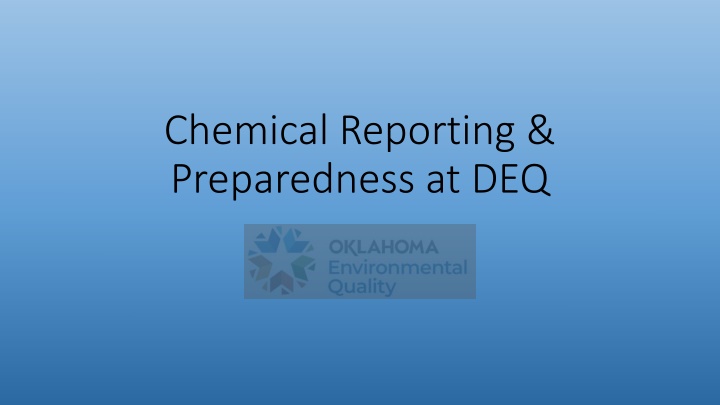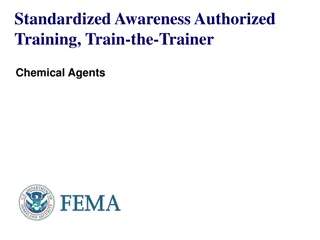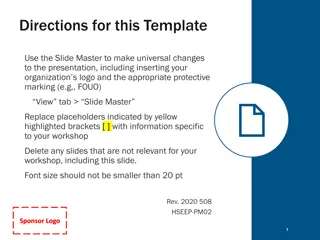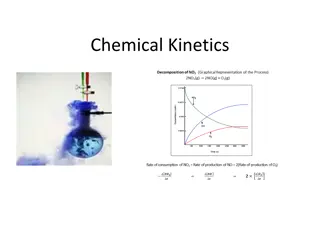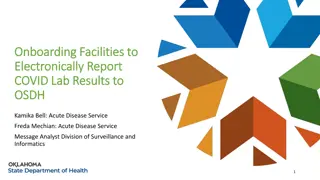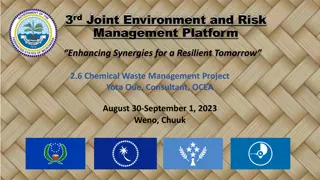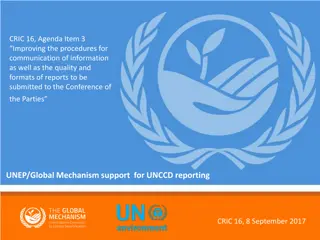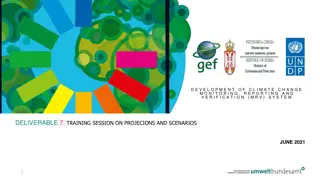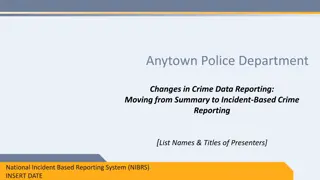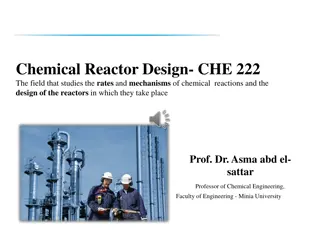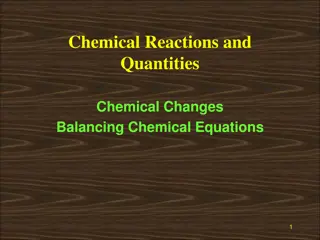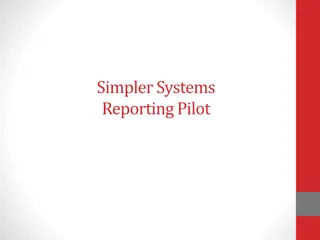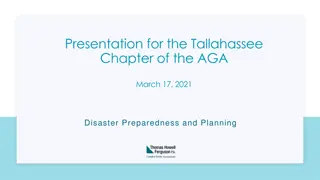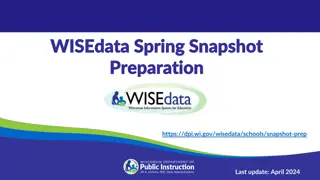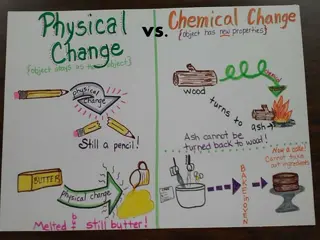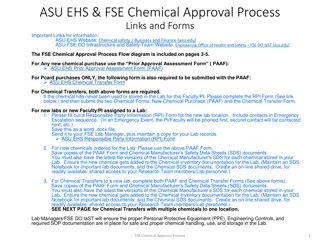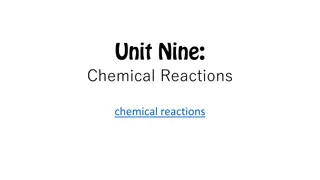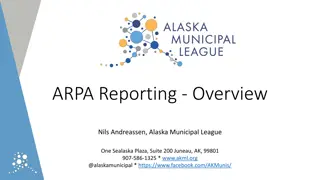Ensuring Chemical Reporting and Preparedness at the DEQ
The Chemical Reporting and Preparedness section at the DEQ focuses on regulations under EPCRA, prompted by incidents like the Bhopal tragedy. EPCRA covers Tier II reporting, spill reporting, LEPCs, State Emergency Response Commission, and Oklahoma Hazardous Materials Emergency Response Commission. Tier II reporting involves facilities storing hazardous materials above a threshold, with reports due annually. The geospatial representation of the Tier II database aids in monitoring. Additionally, spill reporting mandates immediate reporting of releases to relevant authorities.
Download Presentation

Please find below an Image/Link to download the presentation.
The content on the website is provided AS IS for your information and personal use only. It may not be sold, licensed, or shared on other websites without obtaining consent from the author.If you encounter any issues during the download, it is possible that the publisher has removed the file from their server.
You are allowed to download the files provided on this website for personal or commercial use, subject to the condition that they are used lawfully. All files are the property of their respective owners.
The content on the website is provided AS IS for your information and personal use only. It may not be sold, licensed, or shared on other websites without obtaining consent from the author.
E N D
Presentation Transcript
Chemical Reporting & Preparedness at DEQ
The Chemical Reporting and Preparedness Section covers and regulates the rules of EPCRA (Emergency Planning and Community Right-to-Know Act)
What led to EPCRA December 3, 1984, Bhopal India Union Carbide Plant accidental release of deadly Methyl Isocyanate gas used in pesticide manufacturing Kanawha Valley of West Virginia On August 11, 1985, 500 gallons of aldicarb oxime and highly toxic MIC leaked from the Institute plant. Although no one was killed, 134 people living around the plant were treated at local hospitals. United States Congress passed the Emergency Planning and Community Right-to-Know Act (EPCRA) in 1986.
What does EPCRA cover at DEQ? Tier II Reporting Spill Reporting LEPCs (Local Emergency Planning Committees) State Emergency Response Commission Oklahoma Hazardous Materials Emergency Response Commission
Tier II Reporting Database of facilities in Oklahoma that store over a reporting threshold of hazardous materials in the state. Over 50,000 reports annually Covers facilities from Tank Batteries to Chemical Facilities to Water Treatment Plants Reports are submitted between January 1 and March 1 of every year.
Geospatial representation of the 2023 Tier II Database.
Tier II Reporting Reports are filed to the DEQ DEQ then disperses Tier II Data to the County LEPC. County then disperses the data to the First Responder in that area Public may request a copy of a Tier II Report by submitting a request for data to the DEQ
Spill Reporting Facilities must immediately report the accidental release of any substance subject to regulation from the Consolidated List of Lists that is equal to or exceeding the corresponding reportable quantity (RQ) Facilities must report all spills to The National Response Center (NRC) Local First Responders/LEPC (Typically local 911) State Partners (For the state of Oklahoma this is the 24 Hour ECLS Hotline)
Local Emergency Planning Committees DEQ oversees the Local Emergency Planning Committees in Oklahoma on behalf of the OHMERC 77 LEPCs were designated upon EPCRA s implementation. Every county has an LEPC 76 active right now
Who is in the LEPC Each local emergency planning committee shall include, at a minimum, representation from each of the following groups or organizations: 1. Elected state and local officials; 2. Law enforcement; 3. Civil defense; 4. Fire fighting; 5. First aid; 6. Health;
7. Environmental; 8. Hospital; 9. Transportation personnel; 10. Broadcast and print media; 11. Community groups; and 12. Owners and operators of facilities which manufacture, store, or use in any manner those substances specified as extremely hazardous by the administrator of the federal Environmental Protection Agency.
Requirements of the LEPC Develop an emergency response plan Evaluate the need for resources necessary to develop, implement, and exercise the emergency plan, and shall make recommendations with respect to additional resources that may be required and the means for providing such additional resources Review the plan at least annually
Provide information about chemicals in the community to citizens. Take such other action as may be required by the Oklahoma Hazardous Materials Emergency Response Commission or as otherwise deemed necessary to implement the provisions of this act or the federal Superfund Amendments and Reauthorization Act Comply with the Oklahoma Open Meeting Law
Oklahoma Open Meeting Law Every regular, special, emergency, or reconvened meeting of a public body shall be open Required Pre-Meeting Actions Provide Notice Annually by December 15 for the next calendar year Include date, time, and place of meetings Regular meetings can be changed with 10 days notice To whom? County public bodies: County Clerk of the county where the body is principally located
(Cont.) Post Agenda Display agenda 24 hours prior to meeting Where? 1. Post notice and agenda at principal office (or location of meeting if no office exists) OR 2. Post on public body s website Must also maintain an email distribution system and send notice to this group no less than 24 hours in advance, AND, post notice and agenda at the principal office (or location of meeting) during normal business hours at least 24 hours in advance
CAMEO and MARPLOT Free Emergency Management Software used by CR&P Staff As well as Emergency Managers and Tier II Facilities Mapping component in MARPLOT allow for the overlaying of Tier II sites along with schools, hospitals, and other local points of interest Free Training and help available by CR&P Staff
Contacts at DEQ Matt Wormus Tommy Holbrook
